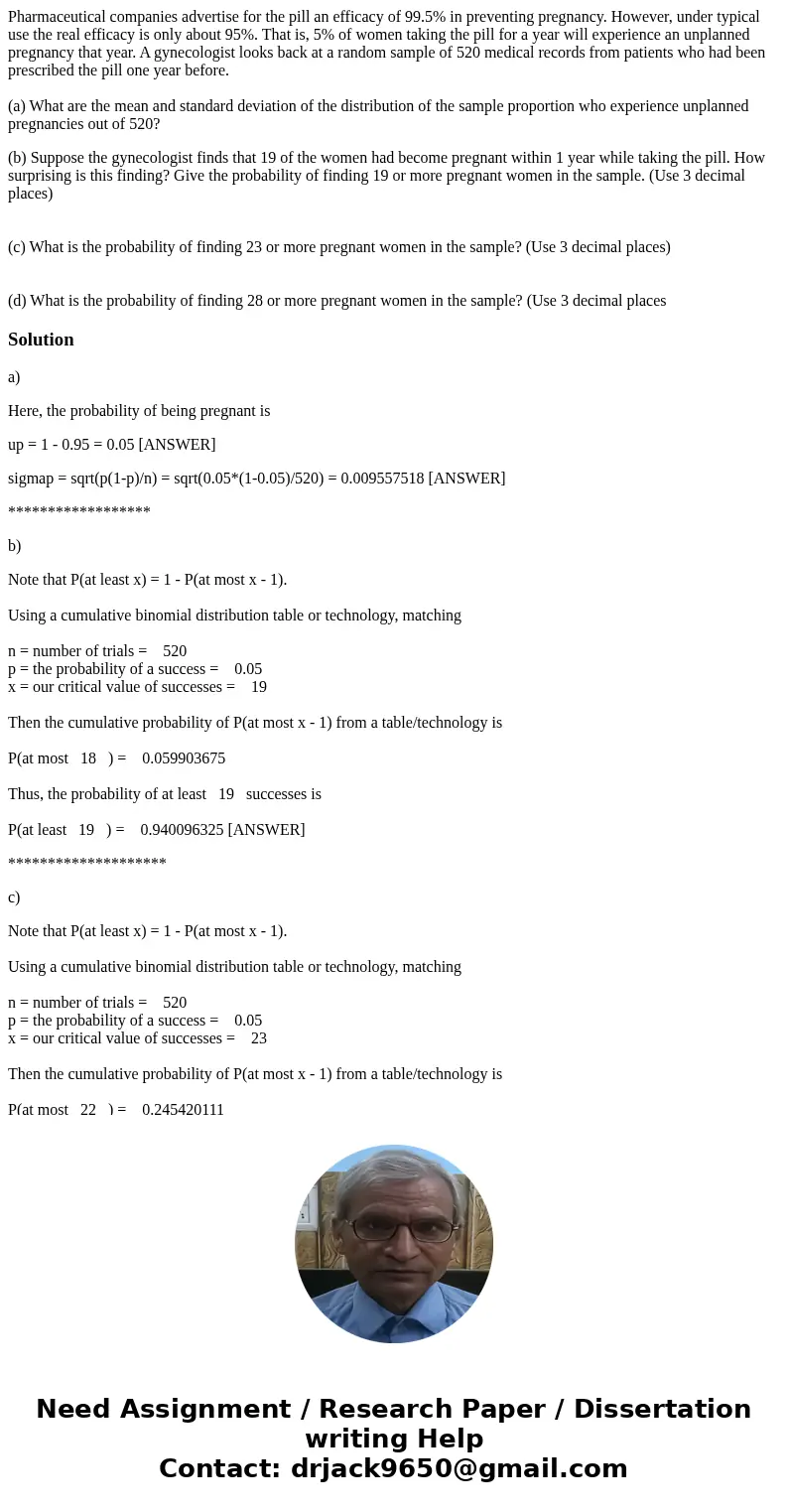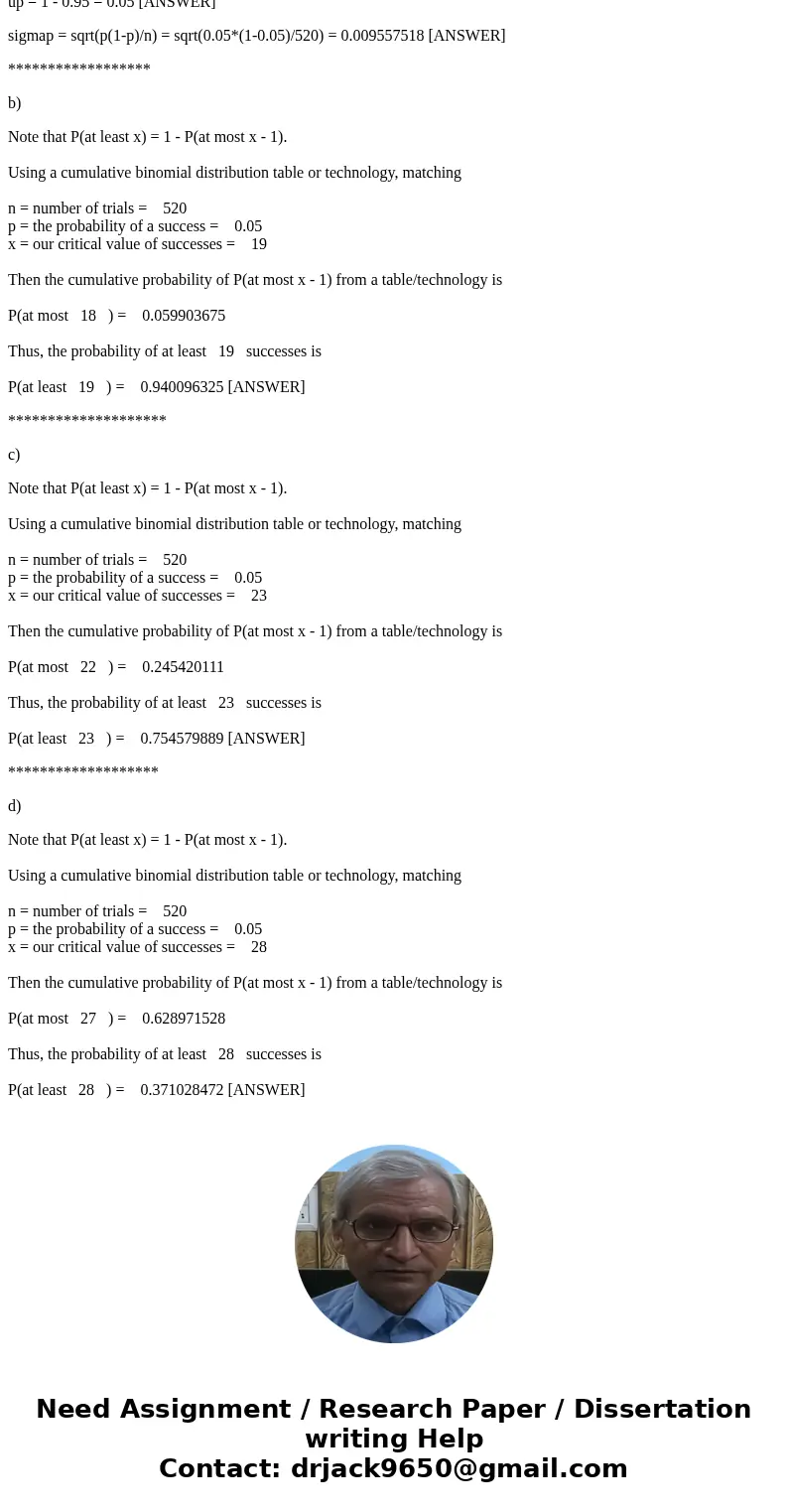Pharmaceutical companies advertise for the pill an efficacy
Pharmaceutical companies advertise for the pill an efficacy of 99.5% in preventing pregnancy. However, under typical use the real efficacy is only about 95%. That is, 5% of women taking the pill for a year will experience an unplanned pregnancy that year. A gynecologist looks back at a random sample of 520 medical records from patients who had been prescribed the pill one year before.
(a) What are the mean and standard deviation of the distribution of the sample proportion who experience unplanned pregnancies out of 520?
(b) Suppose the gynecologist finds that 19 of the women had become pregnant within 1 year while taking the pill. How surprising is this finding? Give the probability of finding 19 or more pregnant women in the sample. (Use 3 decimal places)
(c) What is the probability of finding 23 or more pregnant women in the sample? (Use 3 decimal places)
(d) What is the probability of finding 28 or more pregnant women in the sample? (Use 3 decimal places
Solution
a)
Here, the probability of being pregnant is
up = 1 - 0.95 = 0.05 [ANSWER]
sigmap = sqrt(p(1-p)/n) = sqrt(0.05*(1-0.05)/520) = 0.009557518 [ANSWER]
******************
b)
Note that P(at least x) = 1 - P(at most x - 1).
Using a cumulative binomial distribution table or technology, matching
n = number of trials = 520
p = the probability of a success = 0.05
x = our critical value of successes = 19
Then the cumulative probability of P(at most x - 1) from a table/technology is
P(at most 18 ) = 0.059903675
Thus, the probability of at least 19 successes is
P(at least 19 ) = 0.940096325 [ANSWER]
********************
c)
Note that P(at least x) = 1 - P(at most x - 1).
Using a cumulative binomial distribution table or technology, matching
n = number of trials = 520
p = the probability of a success = 0.05
x = our critical value of successes = 23
Then the cumulative probability of P(at most x - 1) from a table/technology is
P(at most 22 ) = 0.245420111
Thus, the probability of at least 23 successes is
P(at least 23 ) = 0.754579889 [ANSWER]
*******************
d)
Note that P(at least x) = 1 - P(at most x - 1).
Using a cumulative binomial distribution table or technology, matching
n = number of trials = 520
p = the probability of a success = 0.05
x = our critical value of successes = 28
Then the cumulative probability of P(at most x - 1) from a table/technology is
P(at most 27 ) = 0.628971528
Thus, the probability of at least 28 successes is
P(at least 28 ) = 0.371028472 [ANSWER]


 Homework Sourse
Homework Sourse